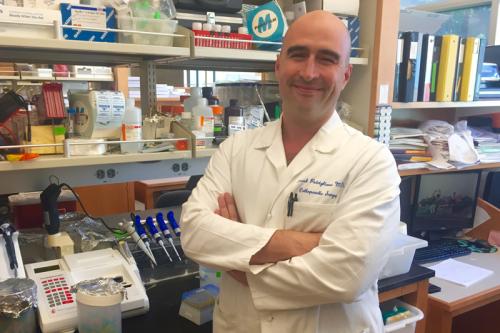
Study shows that tissue-specific stem cells can regenerate muscle after rotator cuff tear surgery
A research team led by Dr. Frank Petrigliano, member of the UCLA Broad Stem Cell Research Center, has identified two types of tissue-specific stem cells that have the potential to regenerate shoulder muscle tissue injured by a rotator cuff tear.
Rotator cuff tears are a common and painful shoulder injury that affects more than 3 million people in the U.S. per year; surgery is often required, but muscle atrophy and fibrosis caused by the injury can often negatively influence surgery outcomes.
“I have many patients whose quality of life is diminished due to a rotator cuff tear. Improving muscle quality in the area around the injury would likely increase surgery success rates and lead to better results for people dealing with this injury,” said Petrigliano, an orthopaedic surgeon in the UCLA David Geffen School of Medicine and an investigator with the UCLA Orthopaedic Hospital Research Center.
The research team removed tissue-specific stem cells, called adventitial cells and pericytes, from human adipose tissue, which stores fat. These cell types have the capability of generating muscle, connective tissue and blood vessels. The adventitial cells and pericytes were then injected into mice that received different types of surgeries for rotator cuff tears. The results showed that mice treated with the cells experienced less muscle loss and greater muscle fiber regeneration after rotator cuff tear surgery.
“Our findings demonstrate significantly less muscle atrophy in the groups treated with the adventitial cells and pericytes compared to controls,” said Petrigliano. “This suggests that we may be able to use these types of stem cells to reduce muscle atrophy and improve strength and clinical outcomes in our patients with a rotator cuff tear.”
Petrigliano will continue to investigate the regenerative capacity of adventitial cells and pericytes to better understand how they work and if they could be used as a treatment for people with rotator cuff tears in the future.
The research was published in The Journal of Bone and Joint Surgery on February 15, 2017 and was funded by the Orthopaedic Research and Education Foundation.